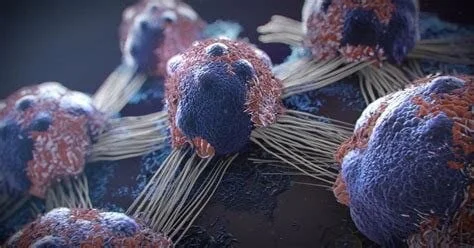Cancer has it all captured right from the ancient animals to the sufficient wildlife and humans. There are much fewer known cancers that affect the wildlife, yet there has been proven research that allows one to study and know from. The Cancer Animals sector is the most vivid and less known sector that has digging to be done.
-
Cancer As Infectious Disease
The starting moments of Experimental Cancer Animal Research happened towards the end of the 18th century when Bernard Peyrilhe injected an emulsion from people’s breast cancer into a dog. He was trying to prove the venomous nature of the diseases.
It is not so surprising for the researcher that the dog did not build any human tumour but had to put down a Bernard Peyrilhe manservant after an abscess formed around the injected site. Hence it can hardly be considered a success. It established the use of surrogate animals in cancer research and can be seen in the work of Francis Peyton Rous.
-
Speculations On Transmissible Cancer In Humans
The initial data on the potential causative agent of cancer cells between individuals comes from a series of experiments by Chester M Sotham, which can be termed criminal or unethical. Scrutinising the possible mechanism by which the immune system kills cancer cells.
Southam was responsible for live cancer cells being injected in 14 patients of cancer, and over a hundred were prison volunteers. In 1962 it was involved in a similar experiment. With 22 serial patients at the Jewish chronic disease hospital in New York City told the patient that they would receive new human cells in an attesting tube to avoid the phobia and ignorance surrounding them word cancer.
-
Cancer in Wild Animals
Cancer has affected not only humans but also many animals, from anteaters to zebras. For example, Tasmanian devils are a type of cancer that can be spread from animal to animal by biting.
-
Cancer in Dinosaurs:
Cancer is a kind of disease that has been in this world more than a million years ago. Because fluoroscopy and CT saw thousands of dinosaurs, they saw approximately 3 per cent of tumours in duck-billed dinosaurs but did not find any other dinosaurs with a tumour.
-
Cancer in wild fish:
A fish, plectropomus leopardus, generally known as coral trout, lives along the great barrier reef; the reef is located under the most enormous known ozone hole through cancer due to increased exposure of the fish ultraviolet radiation. UV light is harmful to humans as UV light develops skin cancer in humans.
-
Causes of Cancer
In both peoples and animals, cancer is a complex thing that proceeds through contact, and the reasons for cancer disease are as follows:
- Family history and genetic factors:
The animal cancer supports the idea that genetic risk factors play an essential role in the development of cancer among pets, golden retrievers, boxer Bernese mountain dogs, and rottweilers are the dogs who mostly get cancer disease.
- Environmental factor:
Many researchers have found that cancer that develops in the human body is mainly through environment cancer causes by the diet or the risk of factors surrounding it.
The Animal Cancer facts may take you by surprise, for the ones with the major highlights are mentioned as follow:
- Clams and cockles get contagious cancer:
Neoplasia is found in clams, cockles, and mussels worldwide.
- Tasmanian devils and dogs can catch cancer, too:
Tasmanian devil cancer is a facial tumour passed between the devils when they bite each other.
- Bowhead whales can live to 200, and they do not get cancer:
Whales are the animals who get the cancer kind of disease very rarely; they are the longest living mammals.
With gaining knowledge over the reasons for cancer disease and the causative agent, there is a vast area for research and development. To bring up various cures that have enough potential to get rid of it eventually.
With GeNext Genomics being a caterer for biologics and associated material providers, the research can never stop. With providing the industry with high-quality components for their cancer research and drug development.
We take pride in delivering the best suited and highly accurate biological materials that are under production with the supervision of our experienced scientists and skilled technicians. We cater to every aspect of cancer, be it the environmental cancer causes or other agents.
Also Read : Use Of Monoclonal Antibody In Cancer Treatment



